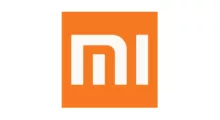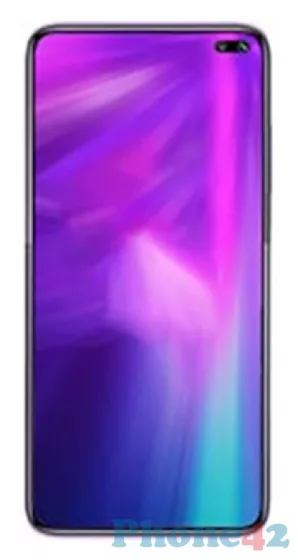
Xiaomi Redmi K30 (2019)
The manufacturer offers this phone with a 6.67 inch IPS display, a Qualcomm Snapdragon 765G chipset, and 6 GB of RAM.
Will it prove its worth? I aim to reveal that by the end of my review.
Table of Contents
- Xiaomi Redmi K30 specifications
- Weight, dimensions, colors
- System, chipset, performance
- Display type, size, resolution
- Memory, storage
- Cameras, flash
- Connectivity, network, wireless
- Battery type, capacity, charger
- Features, sensors, specials
- Verdict, pros and cons
This article shares our personal experiences and thoughts about using the Xiaomi Redmi K30 smartphone. We hope to offer helpful insights to others interested in this device.

Xiaomi Redmi K30 specifications
| Brand | Xiaomi |
|---|---|
| Name | Redmi K30 |
| Model | M1912G7BE |
| Release date | 2019 |
Weight, dimensions, colors
| Colors | black, purple, red |
|---|---|
| SIM type | Nano SIM |
Smartphones use a Nano SIM as a subscriber identity module (SIM), which is a chip card.
System, chipset, performance
| OS version | Android OS v10.0 |
|---|---|
| SoC | Qualcomm Snapdragon 765G |
| CPU | Octa-core, Single-core 2.4 GHz Kryo 475, Single-core 2 GHz Kryo 475, Hexa-core 1.8 GHz Kryo 475 |
| GPU | Adreno 620 |
The Xiaomi Redmi K30 comes with Android OS v10.0 out of the box. Google regularly releases new versions of Android. They have new features, improvements, and security updates. This octa-core CPU consists: Octa-core, Single-core 2.4 GHz Kryo 475, Single-core 2 GHz Kryo 475, Hexa-core 1.8 GHz Kryo 475. Smartphones, tablets, and other mobile devices use Adreno GPUs.
Display type, size, resolution
| Display type | IPS |
|---|---|
| Screen size | 6.67 inch |
| Resolution | 1080 x 2400 px |
| Multitouch support | yes |
People know IPS for its wide viewing angles. It also has accurate color reproduction. The 6.67 inch display should be big enough for our needs. It will make viewing comfortable. This is true whether we're reading, browsing, or watching. The display size is the diagonal distance from one corner of the screen to the opposite corner.
Memory, storage
| RAM | 6 GB |
|---|---|
| Internal storage | 64 GB |
| Memory card slot | no |
The Xiaomi Redmi K30 comes with 6 GB of RAM, which is considered to be sufficient for most users' needs. The needed RAM amount for good performance depends on factors. These include the OS, the apps, and the services we use. 64 GB of storage is usually seen as good for a smartphone. It should be enough for most users. The internal storage of the Xiaomi Redmi K30 (6 GB) cannot be expanded.
Cameras, flash
| Main camera | 64 + 8 + 5 + 2 MP, 9248 x 6936 px, autofocus, optical image stabilization |
|---|---|
| Flash | LED |
| Selfie camera | 20 + 2 MP |
The Redmi K30 has a multi-camera setup. It lets us adapt to different photography situations. We can achieve various perspectives and compositions. The Redmi K30 offers optical image stabilization (OIS) for their rear camera systems.
Connectivity, network, wireless
| GSM 2G bands | 850 / 900 / 1800 / 1900 |
|---|---|
| Network coverage | 2G / 3G / 4G |
| Wi-Fi | Wi-Fi 802.11 a/b/g/n/ac |
| Bluetooth | v5.0, A2DP |
| GPS | A-GPS, GLONASS |
| NFC | yes |
| FM radio | yes |
| USB | USB Type-C |
| Headphone | 3.5 mm jack |
Worldwide, people use 4G networks. They have become the standard for mobile networks in many countries. The Redmi K30 supports the latest Wi-Fi standards. We can use Bluetooth to connect our Redmi K30 smartphone to many Bluetooth devices. The Redmi K30 has a GPS receiver. Many fitness and activity tracking apps rely on GPS. It is used to accurately measure and record outdoor activities. The Redmi K30 has a built-in NFC chip, which allows it to support various NFC applications and services. The 3.5 mm headphone jack allows us to connect wired headphones or earphones to the device.
Battery type, capacity, charger
| Type | Li-Po 4500 mAh, non-removable |
|---|
The Li-Po 4500 mAh, non-removable battery gives the smartphone a good battery backup. The lithium polymer (Li-Po) battery is a light-weight, rechargeable battery. The Redmi K30 does not have a removable battery, it integrates the battery into the phone's design.
Features, sensors, specials
| Sensors | accelerometer, compass, fingerprint, geomagnetic, gravity, gyroscope, light, pedometer, proximity |
|---|---|
| Specials | Corning Gorilla Glass 6, Dual SIM, Fast charging, MIUI |
Today, smartphones come with many sensors. They help make the user experience better. The Redmi K30 smartphone has an accelerometer. The fingerprint reader is a biometric security feature found in Redmi K30 smartphones. The light sensor is a type of sensor in a smartphone. It lets the phone measure light intensity around the device. Dual SIM is great for businesses. They want to give staff a device with separate numbers and bills for personal and business use.
With fast charging, we can get a significant amount of battery life in a few minutes of charging. Corning Gorilla Glass is a type of chemically strengthened super-glass.
Verdict, pros and cons
Every phone has its strengths and weaknesses, and this Xiaomi phone is no exception. As with any device, there are aspects that shine and others that fall short. By examining both sides, we can paint a complete picture of what this phone has to offer. Let's explore its standout features and areas for improvement. Remember, this is just my opinion, and yours might be different.
Pros
- appropriate screen size
- adequate memory
- multicamera setup
- optical image stabilization (OIS)
- dual selfie camera
- Dual SIM support
- Corning Gorilla Glass shield
Cons
- non-expandable storage
- no 5G support
Please let us know if you find incorrect information or something isn't working. Also, tell us if you have a suggestion for improvement.
Updated: June 4, 2024
 I'm Lucas Bradley, the founder of the Phone42.com site. I love technology, especially smartphones, and I've been working with tech stuff for more than 20 years. This means I've seen a lot of changes and have learned a bunch about what makes a good phone. On Phone42.com, I look at all kinds of phones. They can be from big, well-known companies or new ones trying to make their mark. I want to help people understand what's new and cool in the world of smartphones, in a way that's easy to get.
I'm Lucas Bradley, the founder of the Phone42.com site. I love technology, especially smartphones, and I've been working with tech stuff for more than 20 years. This means I've seen a lot of changes and have learned a bunch about what makes a good phone. On Phone42.com, I look at all kinds of phones. They can be from big, well-known companies or new ones trying to make their mark. I want to help people understand what's new and cool in the world of smartphones, in a way that's easy to get.